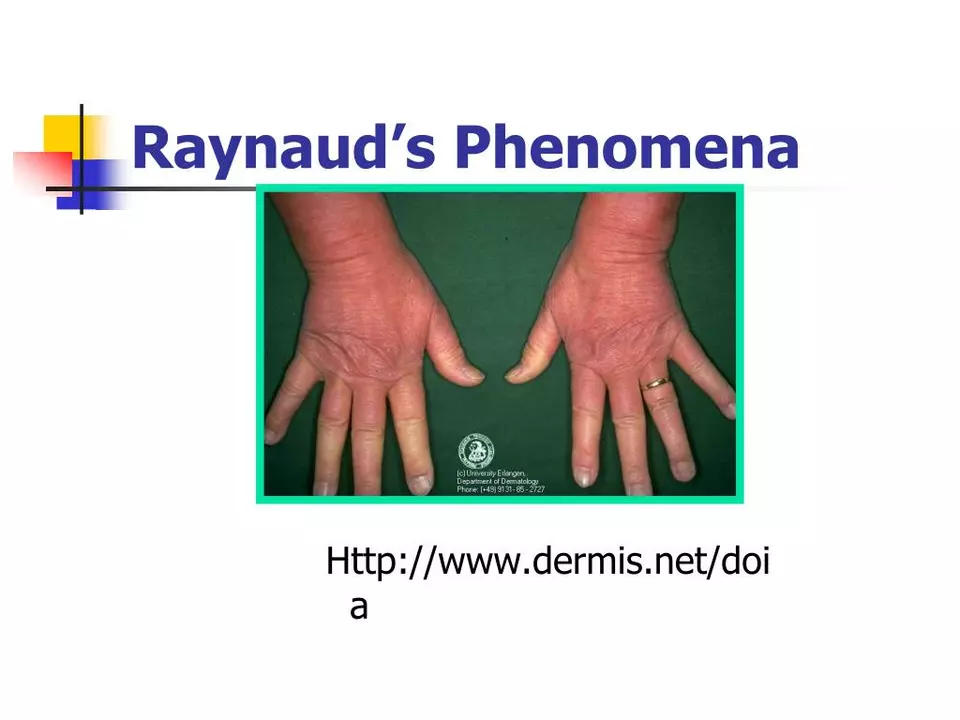Raynaud's phenomenon: why your fingers turn white or blue and what to do
When your fingers or toes change color in the cold or under stress, that's often Raynaud's phenomenon. It happens because small blood vessels in the fingers and toes suddenly narrow, cutting off normal blood flow. That produces a classic color change — white, then blue, then red — and can be scary, painful, or just annoying.
What triggers Raynaud's and how it feels
Cold is the most common trigger. Even brief contact with cold air, holding a cold drink, or touching something chilled can start an episode. Stress and strong emotions also trigger attacks for many people. Other triggers include vibrating tools, certain medications, and smoking.
During an attack, the affected skin goes pale or white first, then may turn blue as oxygen drops. When blood returns you often get a red, throbbing flush and burning or tingling. Episodes usually last minutes but sometimes last longer. Between attacks most people feel fine.
Raynaud's comes in two flavors. Primary Raynaud's is the benign form — it happens on its own and usually stays mild. Secondary Raynaud's is linked to another condition, like autoimmune disease, and can be more serious. If you have very painful attacks, skin ulcers, or sudden new symptoms after age 30, think about secondary causes and see a doctor.
Practical self-care and medical options
Start with simple changes that work for most people. Keep your hands and feet warm: wear gloves, warm socks, and layers. Use hand warmers or warm water if an attack starts. Avoid sudden exposure to cold — open the car heated before taking off gloves, and use an insulated cup for cold drinks.
Quit smoking and avoid nicotine. It narrows blood vessels and makes attacks worse. Cut back on caffeine if you notice it triggers episodes. If you use vibrating tools for work, ask about vibration-reducing gloves and regular breaks.
If lifestyle steps aren't enough, medical options can help. Doctors often try calcium channel blockers (for example, nifedipine) to reduce attack frequency. Other drugs include topical nitrates or vasodilators for severe cases. For very stubborn or limb-threatening disease, specialists may offer procedures like nerve blocks or, rarely, surgery.
Testing usually starts with a careful history and exam. Your doctor may order blood tests for autoimmune markers or use a nailfold capillaroscopy to look at tiny blood vessels near the nail. These tests help tell primary from secondary Raynaud's and guide treatment.
See a doctor now if you have persistent pain, skin breakdown or ulcers, color changes that are only on one hand or started suddenly, or if Raynaud's accompanies joint pain, rashes, or other systemic symptoms. If your doctor refers you to a rheumatologist or vascular specialist, that can speed up diagnosis and targeted treatment.
Many people manage Raynaud's well with simple habits and basic medicines. Small changes — warm clothing, quitting smoking, and quick action when an attack starts — often cut attacks way down. If things feel worse or you worry about tissue damage, get medical help and ask for testing for secondary causes.

Baclofen for Raynaud's Phenomenon: Can It Help?
In my recent research, I came across an intriguing potential treatment for Raynaud's Phenomenon - Baclofen. This medication, typically used for muscle spasms, has shown some promise in alleviating the symptoms of Raynaud's. While there are still limited studies on this topic, the results so far are encouraging. However, I must emphasize the importance of consulting a healthcare professional before trying any new treatments. As I continue to explore this topic, I'll be keeping an eye out for any further developments and will update you accordingly.
More Detail